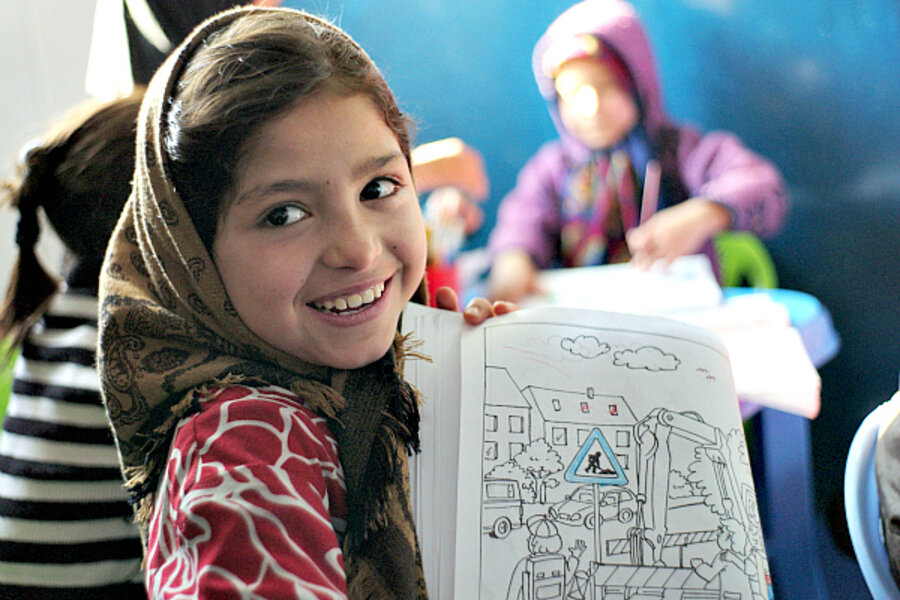New nonprofit joint venture will tell the positive stories of Afghanistan
Loading...
When President Obama remarked in his last State of the Union address that “by the end of next year, our war in Afghanistan will be over,” he was signalling the end of something that many media consumers stopped paying attention to a long time ago.
The media watchdog Tyndall Report found that in 2012, the three major US television networks’ coverage of the conflict in Syria was nearly three times that of the war in Afghanistan.
Even if, as Mr. Obama indicates, US troops do withdraw next year, Afghans will undoubtedly be left with a nation that is riddled with problems and ravaged from more than a decade of war.
But that, of course, is not the only story. A new joint venture project between nonprofit Mountain2Mountain and ad agency cum publisher Sharp Stuff seeks to tell the stories that 12 years of war have stifled.
After carrying out a series of pop-up photography exhibitions in Afghanistan in 2012, Mountain2Mountain executive director Shannon Galpin (who is also a National Geographic Adventurer of the Year for 2013) was asked to do a spinoff version of the American Dreamers book, which featured contributions from “people with interesting ideas about way the world could be” in Afghanistan.
The Afghan Dreamers project will feature 15 to 20 Afghan visionaries, teachers, leaders, artists, and movers and shakers who are moving the country forward in the face of great adversity. Project co-producer and photographer Anna Brones, who accompanied Galpin on the trip in 2012, will also be part of the Afghan Dreamers project. She spoke about why our perceptions of Afghanistan are different from the reality:
“It is a conflict zone, for sure, there are a lot of terrible things that happen on a daily basis. But I think as a media consumer we are trained to expect these really terrible things,” Brones said. “There are a lot of really good people doing really amazing things, but the structure that they’re working within is pretty messed up and very difficult to work with. But after nearly a decade of war, I think highlighting our similarities is a lot more powerful that highlighting our differences.”
Haseena Qudrat is an economics lecturer at the American University of Afghanistan in Kabul, founded in 2006. She said a combination of factors – including heavier media focus on the Iraqi war and the tendency to focus on negative stories in Afghanistan coverage – have crippled the nation’s progress.
“The media has constructed a carefully crafted narrative about an embattled country struggling to keep radicals at bay, while success stories go widely underreported,” Qudrat said. “If the media agencies were to report on the current progress and imminent potential seen in Afghanistan we would witness a pivot in public perception that would usher in an era of sustainable long-term projects that yield a flurry of social and economic benefits.”
Mountain2Mountain director Galpin has been working in Afghanistan since 2007, when she mountain-biked 140 miles across the Panjshir Valley to bring attention to women’s issues. To complete the project, she will use her strong ties to region to find interviewees and stories to feature. The current roster includes Kabul’s mayor, the nation’s first metal band, a female rapper, and a female graffiti artist.
The Afghan Dreamers project is using the independent fundraising website Rally to raise funds to cover travel and reporting costs. In the light of Obama’s recent forecast for the end of the war, Brones feels that getting the funds realized is more important than ever. After the war, she said, Afghanistan’s problems will still persist while media coverage will be virtually nonexistent.
“I asked an NGO worker what his perspective on the country was, and he told me ‘the people are sweet but the country’s a mess,’ ” Brones said. “That’s a very true statement, but the visionaries in this project are the people that are going to move the nation forward. That’s why it’s so important to tell these stories.”





